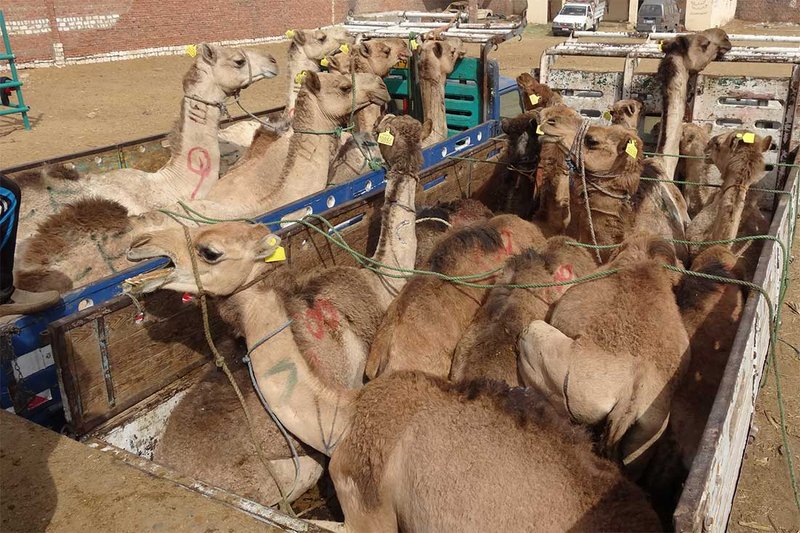
Transporting these gentle giants involves more than just loading them up and hitting the road. It’s about understanding their temperament, preparing properly, and using the right equipment. Here’s the thing: If camels feel stressed or uncomfortable, it can lead to health issues or accidents. So, let’s walk through the essential steps to make the process smoother for both you and the camels.
Understanding Your Camels’ Needs
Before you even think about transporting camels, you need to get to know them better. Camels are known for their unique personalities; some are calm and easygoing, while others can be a bit more high-strung. Honestly, understanding their behavior is key to a successful transport.
For instance, if your camel tends to get nervous, it’s a good idea to spend some extra time with them before the transport. Give them some love and attention, and make sure they’re comfortable around your transport vehicle. Camels can sense your emotions, so staying calm yourself is crucial.
Additionally, consider your camels’ health. If you’re planning a long journey, consult with a veterinarian beforehand. They can provide insights on any medical needs, and ensure the camels are fit for travel.
Choosing the Right Transport Vehicle
Now that you’ve taken the time to understand your camels, let’s talk about transportation options. The right vehicle makes a huge difference. You wouldn’t put a sports car on a bumpy road, right? Similarly, camels need a spacious and safe environment.
When choosing a transport vehicle, look for one that:
- Is specifically designed for large animals.
- Has proper ventilation to keep them cool.
- Provides enough room for them to stand and lie down comfortably.
A well-ventilated space is vital, especially since camels can struggle in hot weather. Remember to add non-slip flooring to prevent injuries during transit. Here’s a tip: If you’re using a trailer, ensure it’s fully enclosed to protect them from wind and debris.
Loading Your Camels Safely
Loading camels might sound straightforward, but it requires a bit of finesse. You want to make sure they’re comfortable and secure as you lead them into the transport vehicle.
Start by introducing your camels to the vehicle. Allow them to sniff around and get used to the environment. When you’re ready to load them, use a halter and lead rope to guide them gently. Remember to stay calm and patient. If they’re hesitant, don’t force them! It’s all about creating a stress-free experience.
Once inside, secure them with appropriate harnesses or dividers to prevent them from moving around too much. It can be helpful to have a buddy camel if they feel more comfortable with companionship.
“Having a friend nearby can ease their anxiety and make the journey smoother.”
Managing Their Comfort During Transport
During transport, it’s essential to keep your camels as comfortable as possible. Check the temperature inside the vehicle regularly. If it’s hot, use fans or ensure there’s adequate airflow. Cold weather is just as concerning—keeping them warm and cozy matters, too!
Making frequent stops is a good idea, especially during long journeys. This gives your camels a chance to stretch their legs and drink water. It also allows you to monitor their well-being. Keep an eye out for signs of stress, like excessive vocalization or pacing.
Let me explain: Stress can lead to health issues, so addressing it early is vital. Offering treats or their favorite food can help keep their spirits high during the trip.
Unloading Your Camels
Once you’ve reached your destination, unloading your camels must be handled with care. Just like loading, unloading should be a calm and deliberate process.
Start by checking the surrounding area to ensure it’s safe and familiar. When you open the transport door, give them a moment to adjust before leading them out. Use the halter and lead again, guiding them gently. Be sure to give them space to move at their own pace to avoid panic.
If you’re in an unfamiliar area, keeping them calm is extra important. Speak to them reassuringly as they step out, and allow them some time to explore their new environment. It’s a big change, after all!
Post-Transport Care and Checkups
After unloading, don’t forget to check up on your camels. Ensure they have fresh water and their favorite snacks available. This will help them settle in faster.
Monitor their behavior closely for any signs of stress or discomfort. If anything seems off, consulting with a veterinarian can address any potential health issues early on. You might be wondering: Why is this important? Well, camels are sensitive creatures, and taking good care of them after transport will help them bounce back even quicker.
Also, don’t forget to give them a bit of TLC. Spend time with your camels, allowing them to adjust and feel at home.
Transporting camels safely is all about preparation and care. By understanding your camels’ needs, choosing the right vehicle, and handling the loading and unloading process with patience, you can make the journey easier for everyone involved.
Remember, caring for your camels doesn’t stop once they arrive at their destination. Ongoing attention and affection will help them thrive, whether they are a working companion or a beloved pet. So, the next time you’re preparing for a transport journey, keep these tips in mind for a smooth, successful experience. Safe travels!

